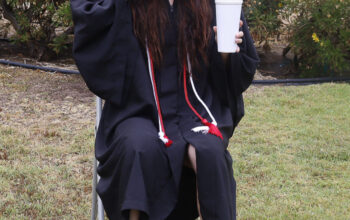One of the things students struggle the most with is finding a way to get to school.
Public transportation, such as the bus, is an option, however the wait time for it to arrive often takes too long.
Private transportation is better than public transportation because the student is in control.
They don’t have to worry about checking the bus times because they mostly have to rely on themselves to get to school. With the exception of factoring in traffic, they’re on their own schedule.
While traffic doesn’t simply go away, when students are driving their own cars they can find a different route, such as through small streets, to avoid it.
Bus routes have many stops to make and only go one way. It often can’t go to different lanes to make its way through heavy traffic because it has to stay on the right hand side of the street so that it can pick up people.
It doesn’t make multiple turns to do drop-offs at exact locations either. Students usually have to walk another block to get to where they want to go.
The majority of students are late because they missed their bus or even got on the wrong one.
The drivers don’t wait at the stop for everyone to simply come and go as they please. If the bus is on time and someone is one or two minutes late, it’s gone.
Not only is the student in control when they’re in their own vehicle, but they also don’t have to deal with some of the unpleasant people that take public transportation.
Busses are almost always packed. Especially in the early mornings when everyone is on their way to school or work. A seat isn’t guaranteed and sometimes the standing room is crowded.
The bus can get even more filled with students from different middle and high schools that are also on the same route.
If the bus is overcrowded and there is no room for any more people, then the driver may choose to skip certain stops and only allow riders to get off.
When a student has their own car, they can choose to ride alone or bring friends along.
The cost of gas can be split among those riding and one less car is on the street.
While not every student has a vehicle, an alternative way to get to school can be through ride sharing apps such as Uber or Lyft.
According to gallup.com, college students seems to be the main demographic for these kinds of services, “Forty-five percent of adults aged 18 to 29 say they use ride-sharing services such as Uber and Lyft, whereas this drops to 36% among those 30 to 49 years old, 23% of those aged 50 to 64 and 13% of those aged 65 or older.d Lyft, whereas this drops to 36% among those 30 to 49 years old, 23% of those aged 50 to 64 and 13% of those aged 65 or older.”
With a few dollars and a bit of wait time, students can request an affordable ride to drop them off where they need to be.
Often times the driver and riders don’t have to communicate, so a student can simply enjoy the comfort of being in the backseat without having to worry about driving, parking or having to get on the bus to get to school.
Although public transportation may have its environmental benefits, private transportation is a more reliable, faster and easier way for students to get around and to campus.



